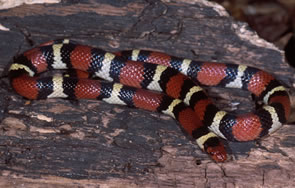
Lampropeltis triangulum
Photo by Eric Stine
Description: Although quite different in appearance, the scarlet kingsnake and milksnake are actually different subspecies (races) of the same snake. The scarlet kingsnake is arguably the most beautiful snake in North Carolina. Scarlet kingsnakes are usually thought to be mimics of the venomous coral snakes and have bright red, black, and yellow bands that extend across the belly. This snake has a red nose and its red and yellow bands are separated by black ones, thus distinguishing them from coral snakes. The milksnake, which is found in North Carolina's mountains and gets considerably larger than the scarlet kingsnake, is usually gray with brown or reddish blotches on its back. The dorsal scales of scarlet kingsnakes and milksnakes are smooth.
Feeding/Diet: Scarlet kingsnakes and milksnakes are constrictors and eat small snakes, lizards, and mice.
Habitat/Range: Scarlet kingsnakes are found within rotting logs and under bark in the pine forests of the Coastal Plain. They are rare in the Piedmont. Milksnakes live in wooded slopes and grassy fields in the mountains and are frequently found hiding under large stones.
Reproduction: Scarlet kingsnakes and milksnakes both breed in the spring and lay 2–17 eggs during the summer.
Miscellaneous: The common name of the milksnake is derived from the belief that these snakes milk cows. Although they are frequently found in barns searching for rodents, stories about their "milking" capabilities are purely myth. Because of their resemblance to the venomous coral snakes, scarlet kingsnakes should be picked up only by those expert in snake identification.
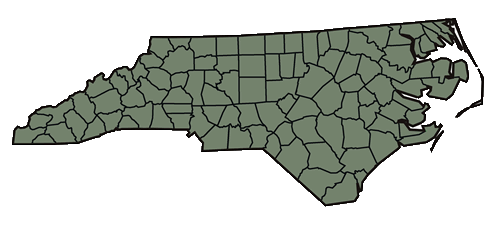
The shaded region represents the range of the scarlet kingsnake/milksnake in
North Carolina.
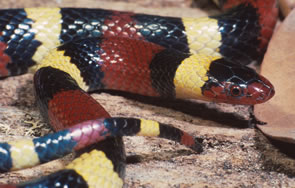
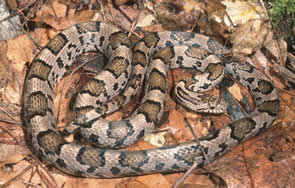
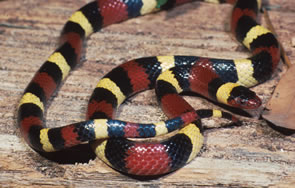
Photo by RW VanDevender
Milksnake.
Photo by RW Van Devender
Scarlet kingsnake.
Photo by RW VanDevender
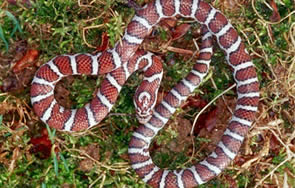
Photo by John White
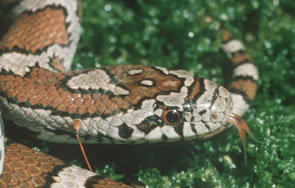
This website created by: J. Willson, Y. Kornilev, W. Anderson, G. Connette and E. Eskew.
For comments or questions contact M. Dorcas: midorcas@davidson.edu.
M. Dorcas homepage: http://bio.davidson.edu/dorcas
Davidson College, Davidson, North Carolina 28035-1719.
Text and maps from: Dorcas, M. E. 2004. A Guide to the Snakes of North Carolina. Davidson College - Herpetology Laboratory, Davidson, NC. – Copyright by Michael E. Dorcas.
Partial Funding for this website provided by a Associate Colleges of the South, National Science Foundation, and Duke Energy.
